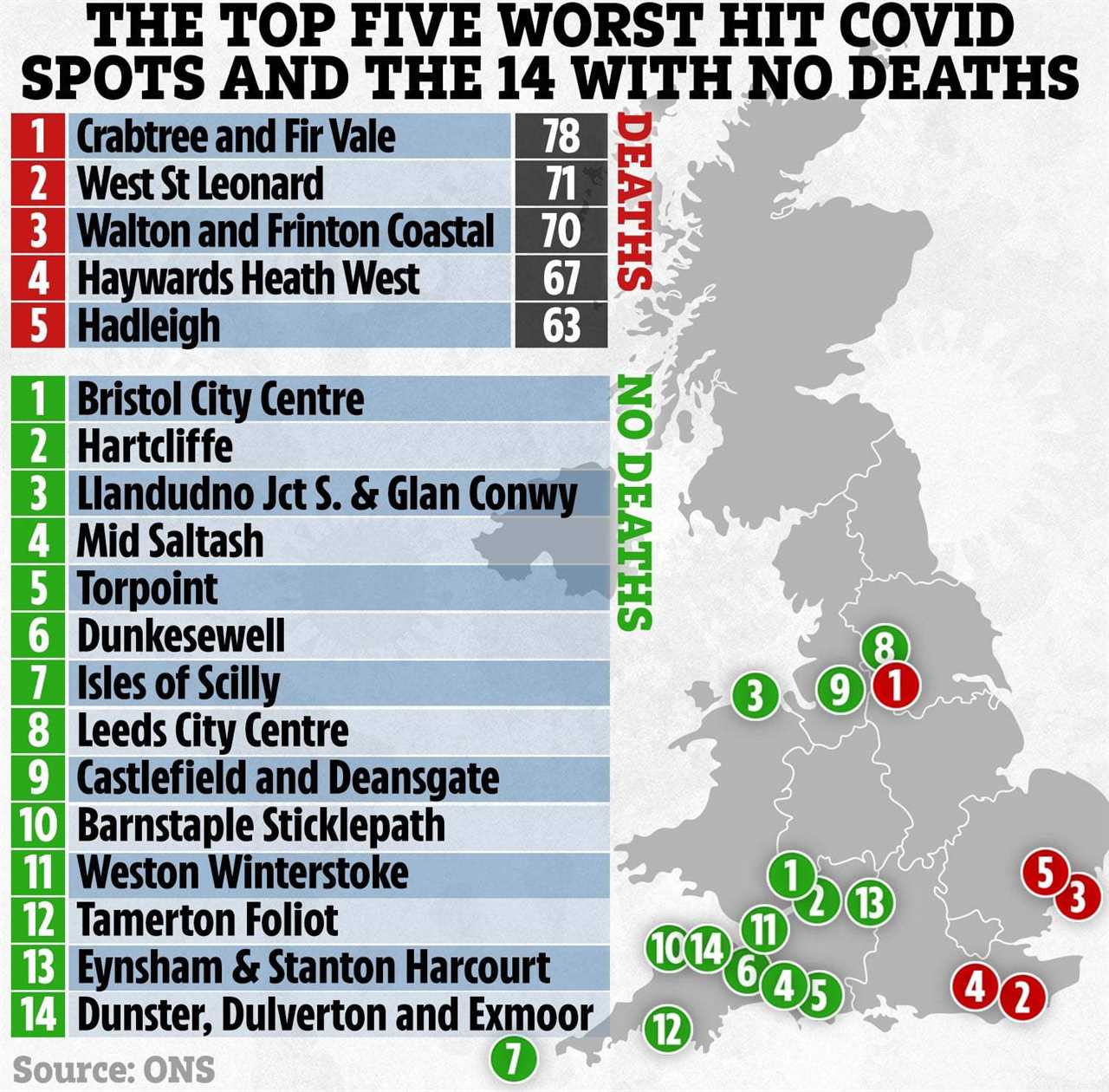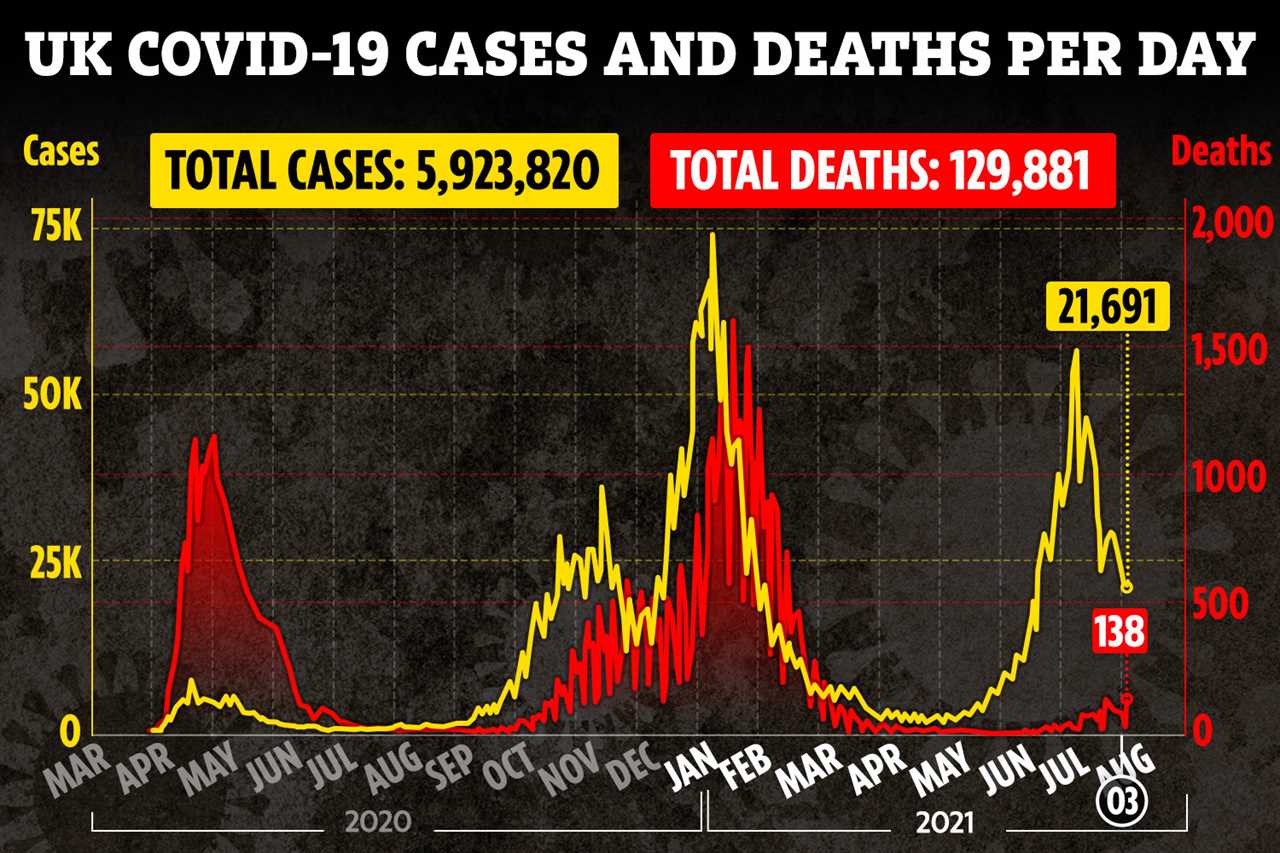THIS map reveals the five areas which have seen the most Covid deaths since the start of the pandemic, and the spots where no one died.
The killer virus has taken thousands of lives from 7,200 postcodes in England and Wales – with new data released today breaking down the fatalities into local neighbourhoods.

Crabtree and Fir Vales in the Sheffield district bore the worst death toll in the Office for National Statistics report.
From March 2020 up to April 2021, the small area saw 78 deaths from Covid alone.
West St Leonard in Sussex came second in the grim tally, with 71 virus deaths in the 14 months.
Third in the morbid league table is Walton and Frinton Coastal in Tendring, which saw 70 deaths up to April.
It comes as…
- Stark lung X-rays reveal the difference Covid vaccines really make
- Jabbed Brits still face two-week quarantine in Portugal as officials refuse to accept Indian-made AstraZeneca vaccine
- Scots will have to carry on wearing face masks for ‘some time’ as Sturgeon ends lockdown
- Panic-buyers raid Wuhan shop shelves as Covid cases hit pandemic ‘ground zero’ for the first time since outbreak
- Covid vaccine trial for pregnant women launched after fears for mums-to-be in hospital
In total, the UK has faced 129,881 deaths from the virus since March last year.
Despite this huge number, 14 areas managed to avoid any deaths, with parts of Devon, Somerset and Manchester – which struggled with high infection rates – seeing no fatalities.
It comes as new deaths reported in the last 24 hours rose from 24 yesterday to 138 today
But the number of people testing positive for Covid in the UK has dropped for the fifth day in a row, with another 21,691 infections recorded.
The falling case numbers coincide with a rise in Covid vaccinations, as ministers urge young people to get their jab to protect against death and serious illness.
DEATH TOLL
The ONS issued data on excess deaths in local neighbourhoods during the pandemic this morning.
In total there are 7,201 neighbourhoods in England and Wales, with an average population of about 8,000 people.
The report found: “Some neighbourhoods saw more than twice as many residents die than would have been expected for the time of year during the spring and summer of 2020, while excess deaths were spread out over a longer period in the following autumn and winter.
“At an individual neighbourhood level between March and July 2020, some of the hardest hit places for overall excess deaths were spread across the north of England, Midlands and south of England.
“There were around 200 neighbourhoods where the number of deaths was at least double what would normally have been expected during those five months.
“As 2021 began with a third national lockdown, there were many areas in both England and Wales with high mortality rates; with the area from Essex to East London to East Sussex suffering due to the spread of the Alpha Covid-19 variant, first identified in Kent.
“Since March 2021, deaths in England and Wales returned to average or near to average for the time of year, although deaths due to Covid-19 increased again in July.”







